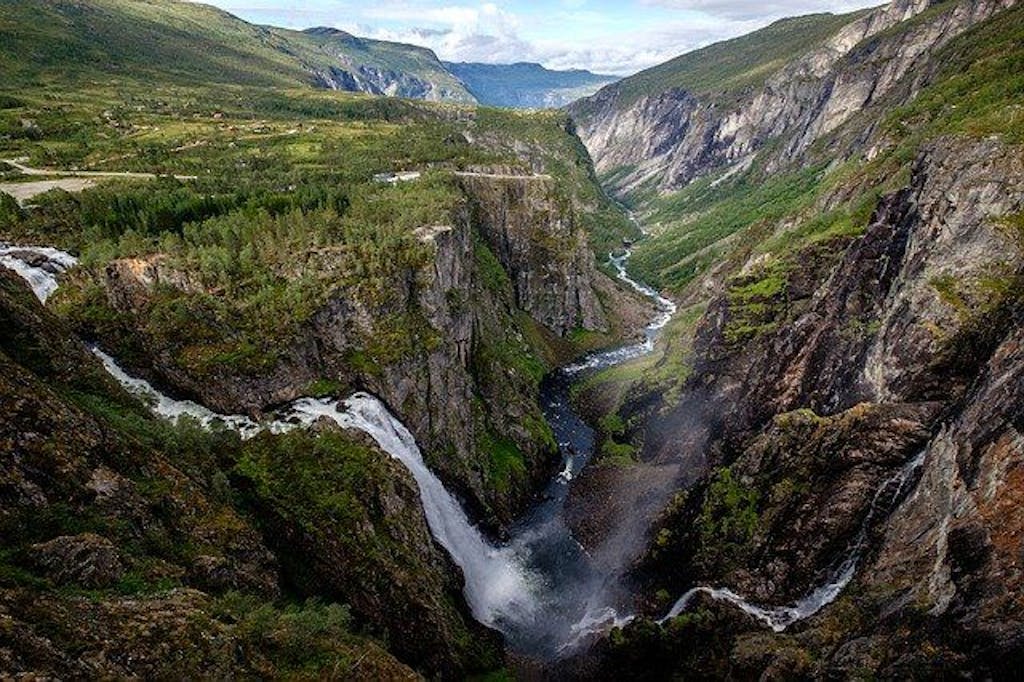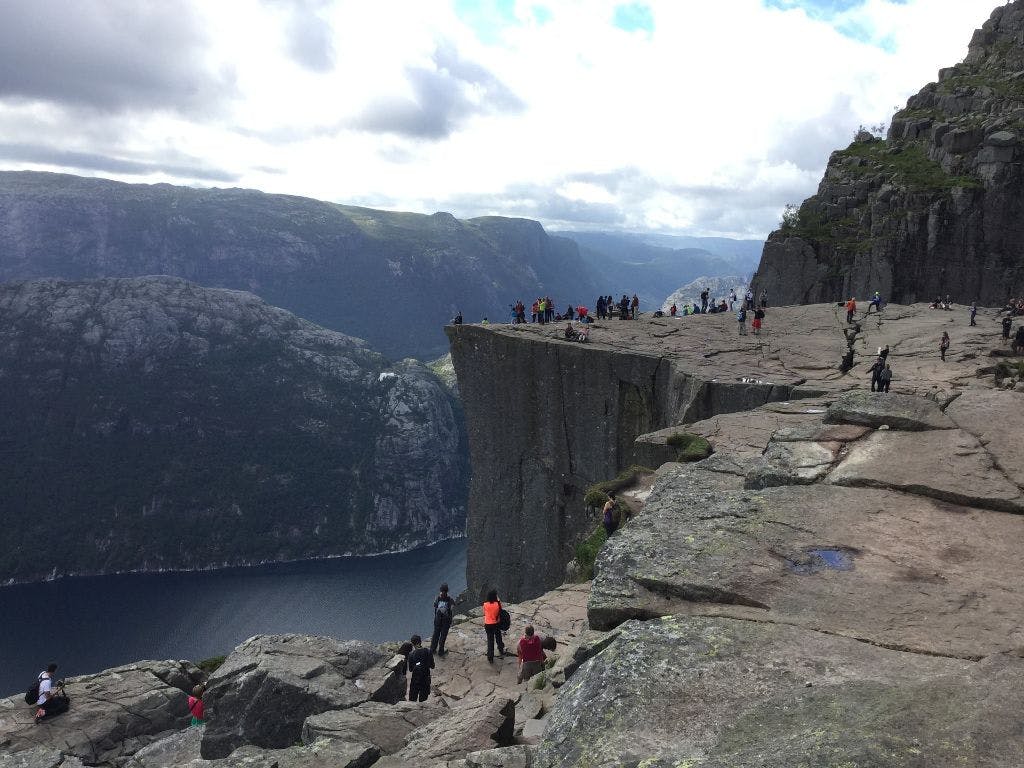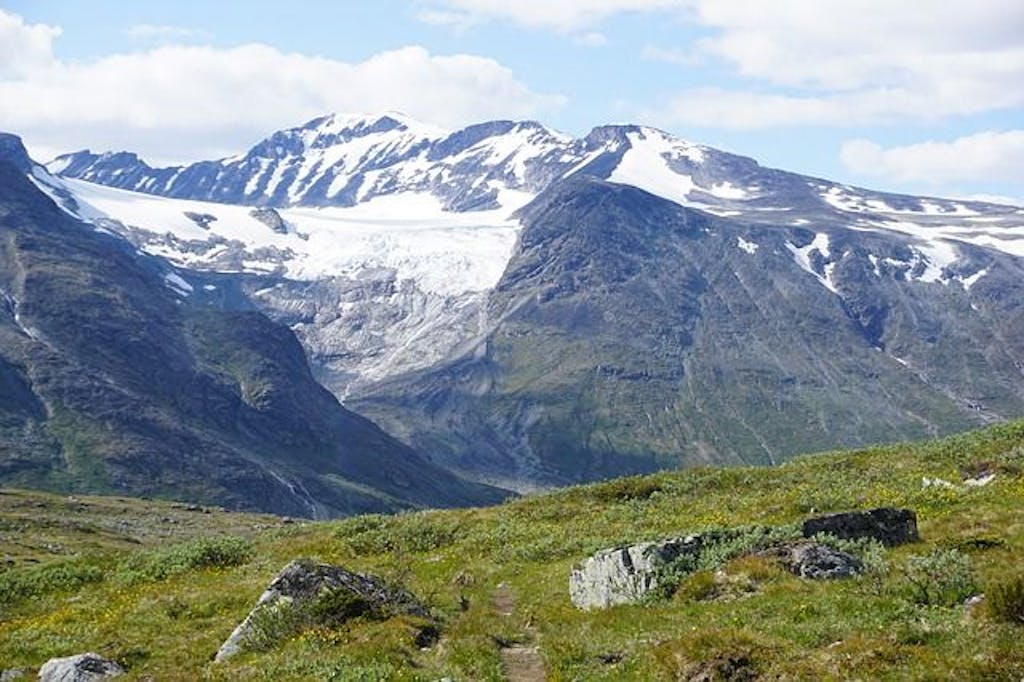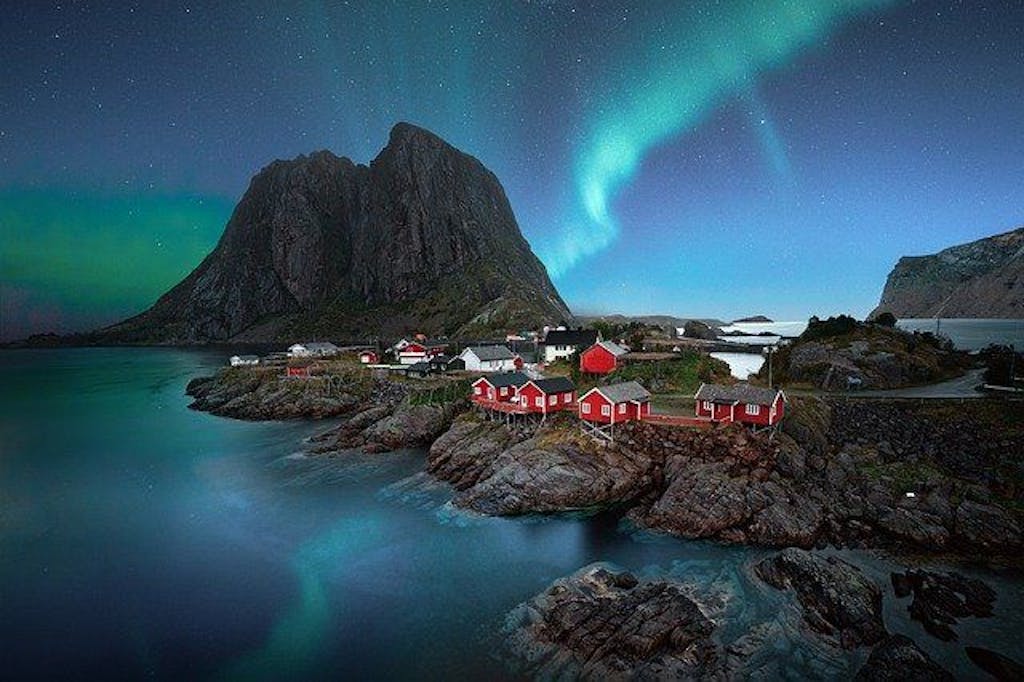Fjords, northern lights, reindeer – Norway is a country of superlatives when it comes to nature experiences. Below we would like to introduce you to one of the most beautiful countries in the world. Discover the amazing landscapes of Norway and learn here why a trip to the north is definitely worth it.

What to see in Norway?
The landscape of Norway is unique and the nature certainly one of the most spectacular in all of Europe, if not the world. Deep, dark fjords, carved into the stone by glaciers long ago, characterize Norway’s whimsical landscape. Spectacular snow-capped mountains rise in the hinterland of the fjords – traditional fishing houses line the coasts. White beaches and fresh sea air invite you to linger. One of the best activities in Norway is certainly hiking. Here you can discover mountains and plateaus and take a rest at rushing waterfalls or quiet lakes.
But also the roads, which naturally wind through the impressive landscape, give Norway its special charm and make a road trip a wonderful experience. Especially great is, that wild camping is allowed in many places in Norway. If you have always wanted to discover the most beautiful corners of Norway, or just want to switch off in nature, then you are exactly right here. Here we show you how to plan your trip with Tripspi.
In the following we would like to introduce you to some of the special features of the Norwegian landscapes.

Fjorde
The first thing that comes to mind for most people when asked about the landscape in Norway is certainly the “fjords”. But what exactly is a fjord? A fjord is a narrow, elongated inlet that reaches deep inland and is surrounded by land on three sides. There are a variety of fjords in Norway and each one is unique and has its own special features. On a road trip through Norway, you will inevitably come across the fjords. The six most famous fjords in Norway are Geirangerfjord, Hardangerfjord, Hjørundfjord, Nordfjord, Lysefjord, Nærøyfjord and Sognefjord
Lakes
Norway is one of the countries richest in water, as it is home to about 160,000 lakes. Around these large and small natural water reservoirs has settled a unique flora and fauna. But also some of the largest cities are located on the shores. One of the largest lakes in the south of the country is Lake Mjøsa, into which a total of 17 rivers flow. It is 365 square kilometers in size and can be explored by boat. In second place is Lake Røssvatnet with a size of 218.61 km² and in third place is Lake Femund with 203.52 km².

Mountains
The ten highest Norwegian mountains are all located in Jotunheimen National Park. Galdhøpiggen, at 2469 m, is not only the highest mountain in Norway, it is also the highest peak in Northern Europe. Whether for hiking or skiing, here every nature lover and outdoor fan gets his money’s worth.
Glaciers
According to an official count a few years ago, there are over 1000 glaciers in Norway, covering an area of over 2600 km2. Often Norway’s glaciers, which run along the mountains in the west, are located near the fjords. A trip to a glacier is always an experience for young and old. Even in summer, hikers can stand here in the snow and enjoy the sight of the mighty ice. The largest glaciers in norway are Jostedalsbreen with 487 km², Vestre Svartisen with 221 km² and Folgefonna with 214 km².
Beaches
However, in Norway you will also find long, beautiful, clean and empty beaches that invite you to relax. Most of the coastal areas are free to the public. Enjoy a few relaxing days at the beach and combine them with cool activities. For example, you can go cycling, hiking or fishing, or you can experience Arctic adventures under the midnight sun. Water temperatures rise to over 20 degrees in some places, and if you’re really lucky with the weather, you might feel like you’re on vacation in more southern latitudes.

Valleys
Deep valleys and wide landscapes. Let your gaze wander at your leisure. Paths wind along rushing rivers, and through steep gorges. You’ll wonder if anyone lives here at all. In the valleys, you will walk through beautiful cultural landscapes, along old roads and past mountain farms with interesting stories. Nature in the valley is different from that in the high mountains, because the valleys are better protected from the weather. Here you can discover many different flowers and plants.

Islands
Would you have guessed that there are more than 100,000 islands in Norway? The west coast is so rugged that it’s no fun to count them. One of the most famous group of islands is Lofoten. They consist of 80 spectacular islands in the North Sea and were once home to the Vikings. Lofoten is known for excellent fishing, unspoiled nature and remote fishing villages. Paddle a kayak through the islands and watch the sea eagles circling on the horizon. You’ll also find some of Europe’s most beautiful harbor facilities and the open-air Viking museum of Borg.
The most beautiful nature places of Norway
In the following we like to introduce the most beautiful nature places of Norway, which you should not miss during your Norway travel.
Preikestolen
The Preikestolen, also called “The Pulpit”, is one of the most famous tourist attractions in Ryfylke and one of the most spectacular viewpoints in Norway at all, if not worldwide. At 604 meters high, the rock pulpit rises as a steep plateau cliff above the Lysefjord. The rock plateau, which measures about 25 x 25 meters, was probably formed 10,000 years ago by frost blasting. The view over the fjord is breathtaking. If you are not afraid of heights, you can dangle your legs above the cliff. From Stavanger, you can explore the spectacular rock in a full-day excursion. The hike to Preikestolen itself takes two hours.

Geirangerfjord
The 20-kilometer passage through the Geirangerfjord is considered the most impressive shipping route in the world. The fjord is listed as a UNESCO World Heritage Site and offers fascinating views throughout the journey. Long-abandoned homesteads cling to steep cliffs, while ice-cold waterfalls tumble thunderously, merging with the fjord’s emerald waters. Those who start in Geiranger enjoy the tranquility as they leave the small harbor. An even more idyllic place to embark is the old Viking port of Hellesylt. Of course, the best way to enjoy the view is from the open deck.
Lofoten Islands
Few visitors ever forget the first sight of Lofoten, shimmering green and yellow in summer, its razor-sharp mountain peaks rising boldly into the blue sky. The Lofoten Islands, in northern Norway, impress every visitor with their breathtaking scenery of rugged mountains, turquoise seas, Caribbean beaches and, of course, the aurora borealis.

Lofoten is also famous for its cod. The delicious, large sea fish has brought prosperity to Lofoten for centuries. The islands are connected by bridges, making them easy to travel around, whether by bus or car. A guaranteed unforgettable experience, however, is a bike ride across Lofoten.
Jotunheimen Nationalpark
The highlands of central Norway are among the most popular summer destinations in Europe. There are numerous national parks crisscrossed by well-maintained hiking trails. Among them, Jotunheimen National Park stands out dazzlingly. That its name translates as “home of the giants” is not surprising. With no less than 60 glaciers and 275 peaks at over 2,000 meters, Jotunheimen is fabulously beautiful, breaking numerous records in the process. Those who hike the legendary Besseggen Ridge or make day trips to the Hurrungane massif will never forget this landscape. Norway’s highest peak Galdhøpiggen at 2,469 meters casts its impressive shadow over the park and Jotunheimen’s proximity to the fjords make it even more attractive.

Trolltunga
Trolltunga is undoubtedly one of the most impressive cliffs in Norway. It is located at about 1100 meters above sea level and about 700 meters above the Ringedalsvatnet lake. On the western edge of the Hardangervidda mountain plateau and near the town of Odda, Trolltunga (the Troll Tongue) and the valley below it were formed by an ice cap that covered most of Scandinavia during a series of ice ages. Every year, travelers from all over the world come here to make the hike and have their picture taken on the world-famous cliff.
Why you should travel to Norway
Could we convince you to travel to Norway? If not, here is a short summary: glaciers, lakes, mountains, beaches, valleys, fjords, islands and northern lights make every round trip in Norway an unforgettable experience. The country is located at the northernmost point of Europe and has the lowest population density on the continent. In addition, Norway is ranked first in the Human Development Index. In short, the ideal country to live and travel! Here, sea and mountains harmoniously combine to create fantastic landscapes. When traveling make sure to protect the environment and the beautiful landscape of Norway. Our 5 tips to travel more sustainably will show you how to do that!
The country shows a different side in every season: in summer warm and bright, with endless days where you can see the sun until midnight – In winter, snow covers nature with a white mantle and the leitmotif is winter sports. Now is also the time when you can watch the Northern Lights. Don’t know what to pack for your trip? Here we give you some advice on which shoes to pack for hot and cold regions.

A trip to Norway is worth it just for this brief, breathtaking spectacle. The country is also an ideal destination for families: surprise your children with a trip to the home of Santa Claus.
You might also like these articles:
The beautiful landscape of Italy
The beautiful landscape of Spain
The beautiful landscape of Iceland










